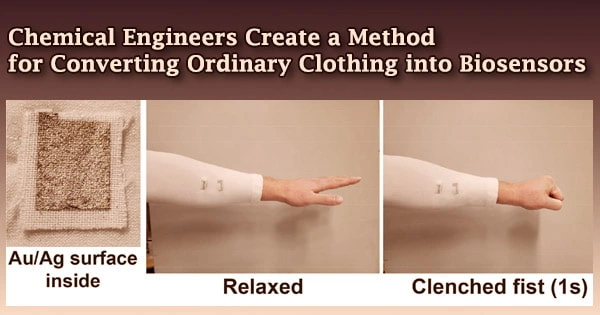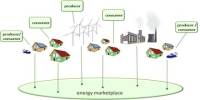It’s been said that you are what you wear. That is made even more true by new biosensor technology developed at the University of Utah’s College of Engineering.
Huanan Zhang, an assistant professor of chemical engineering, has devised a method for converting clothes fabric into biosensors that record muscle electrical activity as it is worn.
A study published in the science journal APL Materials recently described his novel method.
Taehwan Lim, a University of Utah chemical engineering graduate student, and Sohee Lee, from the Department of Clothing and Textiles at Gyeongsang National University in South Korea, co-authored the paper “Gold and silver nanocomposite-based biostable and biocompatible electronic textile for wearable electromyographic biosensors.” A copy of the paper can be found here.
Zhang and his colleagues developed a way for converting regular cotton/polyester mix fabrics into sensors that measure electrical impulses generated by muscular activity. This could be a far more effective way to measure muscle activity for physical rehabilitation or other medical purposes.
Normally, current bioelectrical sensor technology, which involves taping sensors with wires to the skin, is useless, painful, pricey, and difficult to manufacture.
“This new method can enable clinicians to collect a muscle’s long-term electrical signals with more precision,” says Zhang. “And we can get a better understanding of a patient’s progress and therefore their therapeutic outcomes over time.”
When a human muscle contracts, electrical signals in the form of ions are released (as opposed to electrons from an electrically powered device). Zhang’s method includes placing a small layer of silver on a piece of fabric to make it conductive and so receive the muscle’s electrical signal.
This new method can enable clinicians to collect a muscle’s long-term electrical signals with more precision. And we can get a better understanding of a patient’s progress and therefore their therapeutic outcomes over time.
Zhang
However, having just a thin layer of silver on the skin is problematic because the metal can be toxic when in contact with the skin for long periods of time. As a result, the researchers add a second microscopic layer of non-toxic gold to the mix. According to Zhang, the gold not only shields the skin from the silver, but it also improves the electrical signal.
“The silver layer provides a baseline conductivity, but the gold on top improves the signal and the biocompatibility, and it helps reduce the cost of manufacturing pure gold devices,” he says.
The silver coating is sprayed to the fabric in a method similar to screen printing a graphic onto a T-shirt, but only to the regions of the garment that come into contact with the muscle being measured.
An electrochemical technique is then used to deposit the gold coating. The sensor patches are then connected to wires and electromyography (EMG) device, which measures muscle contractions.
Zhang points out that the method is also robust to repeated washing machine cycles. His team washed a piece of clothes treated with the procedure 15 times and found that it had no effect on the sensors’ performance.
Zhang and his team are currently putting the technology to the test on a forearm compression sleeve. While this technique would be best suited to compression sleeves or socks since it requires the clothes to be in continual contact with the skin, Zhang believes it may also be applied to other skin-tight garments like cycling pants or athletic tights.
This sensor-enabled apparel is another example of the growing trend of wearable electronics that continuously monitor your health throughout the day, such as the Apple Watch.
If EGM monitors become compact enough, Zhang anticipates a day when his clothes may interface with a digital watch to offer real-time information.
















